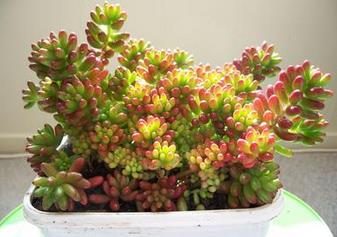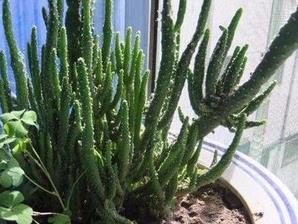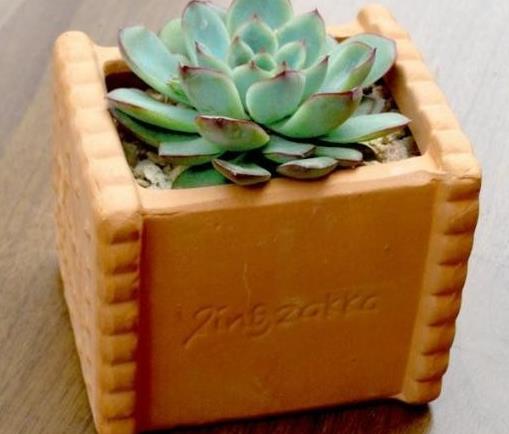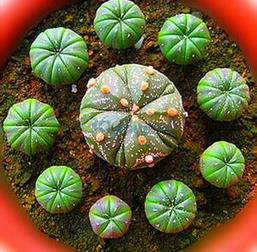What is the best anti-radiation plant?
Speaking of radiation protection plants, I believe we are no stranger, especially now the white-collar workers who have been sitting in front of the computer for a long time have been friends who often face the computer at home. The radiation of the computer has a great impact on you. What kind of radiation protection plants should be placed? now I'd like to introduce you to what radiation protection plants are best.
First, what is the best radiation protection plant?

Some ornamental plants have the function of absorbing electromagnetic radiation. Putting these plants in the home or office can effectively reduce the electromagnetic radiation pollution caused by various electrical and electronic products. These plants include: cactus, gem flower, Sedum and other succulent plants.
Cactus or cactus is a good variety of flowers for garden greening and beautification. Although they are covered with thorns, they are beautiful in appearance and can be used for processing, medicine and consumption. They also have the special function of absorbing electromagnetic radiation and reducing the harm of computers to human health. Cactus body with thorns, thick flesh, containing a lot of water, easy to absorb and dissolve the surrounding electromagnetic field radiation toxins, reduce indoor and outdoor pollution, beneficial to human health.
Some horticultural experts suggest that it is appropriate to put several pots of cactus in places such as televisions, computers and microwave ovens with electromagnetic field radiation. Many large-scale computer placement places in foreign countries are all full of cactus, large and small, which is an advanced scientific measure, which can be used for reference.
For people who do not like cactus, if they work in front of the computer for a long time, aloe and fruit can be placed in front of the computer as the best absorbent and deodorant. Bonsai plants with fruits such as pears, oranges, melons and pumpkins are placed next to the computer, which is not only environmentally friendly, but also natural.
As for the office because there are all kinds of smelling poisonous gases, and there is no sunlight, so I suggest that only cactus is not enough, mixed good. The following plants can also absorb electromagnetic radiation toxins and have other effects.

1. Millennium wood
Its charming appearance and its ability to adapt to the dark and dry environment of the office are loved by interior designers. As long as you pay a little attention to it, it can grow for a long time and bring good air. It is difficult for other plants to compare with millennium wood in terms of inhibiting harmful substances. Leaves and roots can absorb xylene, toluene, trichloroethylene, benzene and formaldehyde, and decompose them into non-toxic substances.
2. Weeping leaf banyan
This kind of plant shows many excellent characteristics. It increases the humidity of the room and is good for our skin and breathing. At the same time, it can also absorb formaldehyde, xylene and ammonia and purify the turbid air.
In addition, the small leaves of drooping banyans make them beautiful decorations in the room, and they are often used by interior designers to create a cheerful atmosphere.
3. Golden Pueraria lobata
Can work in an environment that other indoor plants can't adapt to. Through a process similar to photosynthesis, it can break down toxic substances released from fabrics, walls and smoke into plant-owned substances.
The beautiful heart-shaped leaves of Pueraria lobata are uniquely decorative, especially when they hang outside the hanging basin.
This kind of plant is easy to take care of and can grow well even in dark environments, making it the best choice for beginners.

4. Green pineapple
Large evergreen vines. Growing in the tropics, it often climbs on the rocks and tree trunks of the rainforest and can grow into giant lianas. The green leaves have yellow patches. It is a kind of flower which is more suitable for indoor display.
Second, what are radiation-proof plants?
Anti-radiation plants refer to plants that can absorb computer radiation, cactus, cactus, cactus finger, measuring ruler and other plants can prevent radiation and absorb carbon dioxide and release oxygen.
For long-term computer users, in addition to putting some radiation-proof plants, we suggest you put a plaster lamp in the corner of your desk, which can effectively relieve your fatigue and reduce electromagnetic radiation.

Third, whether radiation protection plants are useful or not.
Many people think that because succulent plants such as cacti have been growing in tropical deserts for a long time, they have a strong ability to absorb sunlight and can be placed next to computers to prevent computer radiation. in fact, this is not the same thing at all. resistance to sunlight does not mean that it can absorb electromagnetic radiation.
So far, there is no scientific basis to prove that plants can directly protect against radiation. Computer radiation is mainly electromagnetic waves, and electromagnetic waves travel along a straight line, so plants can not directly help people block radiation, so plant secretions volatilize in the air. If plant secretions can absorb radiation, radiation protection doors do not need heavy cement and heavy metal lead. Just fill it with substances that contain plant secretions. Therefore, there is no scientific basis for putting plants next to computers to protect against radiation, and of course it is good for plants to be in a pleasant mood.

Fourth, how to prevent computer radiation
When operating a computer, it is best to add a computer-specific color filter to the monitor to reduce the harm of radiation. Try not to put idle metal objects indoors to avoid the re-radiation of electromagnetic waves. When using a computer, you should adjust the brightness of the screen. Generally speaking, the brighter the screen, the stronger the electromagnetic radiation, and vice versa. Therefore, the screen should not be too bright to reduce the damage of screen radiation to the human body.
In addition, you should keep an appropriate distance from the monitor during operation. The correct distance should be more than 0.5 meters from the monitor. After operating the computer, wash your face with water. Because when operating the computer, the face absorbs a lot of particles of electromagnetic radiation, forming the electromagnetic pollution of the face, which is harmful to the skin. Generally speaking, after receiving electromagnetic radiation, washing your face with clean water can reduce the radiation by more than 90%.

In addition, radiation protection can also start from the diet, daily consumption of carrots, bean sprouts, tomatoes, rape, kelp, cabbage, lean meat, animal liver and other foods rich in vitamin A, C and protein, to enhance the body's ability to resist electromagnetic radiation
1: you can wear radiation protection clothing (radiation protection overalls).
2: use anti-radiation skin care products.
3: the monitor can use the computer radiation protection screen
4: plant some radiation-proof bonsai plants (such as cactus, stone lotus, Ma Bao)
5: put some absorbing materials, such as bamboo charcoal, in front of the computer
6: using a computer radiation elimination meter
Resistance to sunlight does not mean that it can absorb electromagnetic radiation.
So far, there is no scientific basis to prove that plants can directly protect against radiation. Computer radiation is mainly electromagnetic waves, and electromagnetic waves travel along a straight line, so plants can not directly help people block radiation, so plant secretions volatilize in the air. If plant secretions can absorb radiation, radiation protection doors do not need heavy cement and heavy metal lead. Just fill it with substances that contain plant secretions. Therefore, there is no scientific basis for putting plants next to computers to protect against radiation, and of course it is good for plants to be in a pleasant mood.

Fourth, how to prevent computer radiation
When operating a computer, it is best to add a computer-specific color filter to the monitor to reduce the harm of radiation. Try not to put idle metal objects indoors to avoid the re-radiation of electromagnetic waves. When using a computer, you should adjust the brightness of the screen. Generally speaking, the brighter the screen, the stronger the electromagnetic radiation, and vice versa. Therefore, the screen should not be too bright to reduce the damage of screen radiation to the human body.
In addition, you should keep an appropriate distance from the monitor during operation. The correct distance should be more than 0.5 meters from the monitor. After operating the computer, wash your face with water. Because when operating the computer, the face absorbs a lot of particles of electromagnetic radiation, forming the electromagnetic pollution of the face, which is harmful to the skin. Generally speaking, after receiving electromagnetic radiation, washing your face with clean water can reduce the radiation by more than 90%.

In addition, radiation protection can also start from the diet, daily consumption of carrots, bean sprouts, tomatoes, rape, kelp, cabbage, lean meat, animal liver and other foods rich in vitamin A, C and protein, to enhance the body's ability to resist electromagnetic radiation
1: you can wear radiation protection clothing (radiation protection overalls).
2: use anti-radiation skin care products.
3: the monitor can use the computer radiation protection screen
4: plant some radiation-proof bonsai plants (such as cactus, stone lotus, Ma Bao)
5: put some absorbing materials, such as bamboo charcoal, in front of the computer
6: using a computer radiation elimination meter
Related
- Wuhan Hospital Iron Tree Blooming Result Was Instantly Frightened by the Gardener Master
- Which variety of camellia is the most fragrant and best? Which one do you like best?
- What is the small blue coat, the breeding methods and matters needing attention of the succulent plant
- Dormancy time and maintenance management of succulent plants during dormancy
- Minas succulent how to raise, Minas succulent plant pictures
- What are the varieties of winter succulent plants
- How to raise succulent plants in twelve rolls? let's take a look at some experience of breeding twelve rolls.
- Attention should be paid to water control for succulent plants during dormant period (winter and summer)
- Watering experience of twelve rolls of succulent plants
- Techniques for fertilizing succulent plants. An article will let you know how to fertilize succulent plants.



